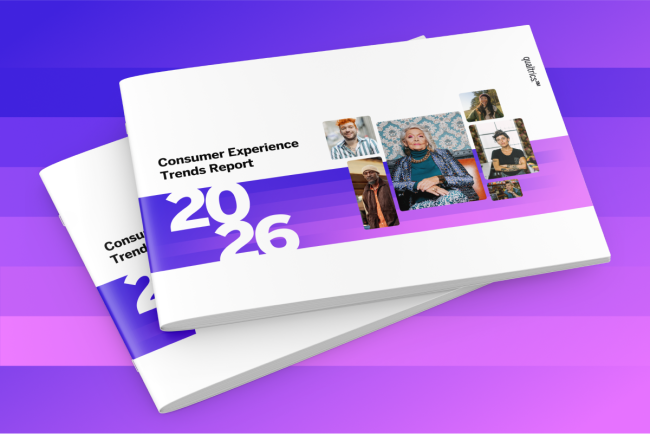At this year’s Qualtrics X4 Experience Summit, the future of banking played out, not in the form of dazzling product launches or economic forecasts, but in a rare and revealing discussion between two industry leaders. Priscila Salles, Chief Customer Officer at Banco Inter, Brazil’s digital banking powerhouse, and Mike Robinson, Head of Customer Experience at Barclays US Consumer Bank, laid out what it takes to transform the ephemeral notion of “customer experience” into a tangible business advantage.
Their conversation exposed the magnitude of the challenge facing global consumer finance: How to operationalize empathy and action at a scale traditionally equated with impersonality. In this high-stakes landscape, Salles and Robinson argued, it is not just data discipline or journey-based responsibility that delivers results—it is the ability to truly listen across every channel and touchpoint. Only by embracing omnichannel listening can organizations translate noise into actionable insight and win the loyalty of today’s connected customer. What emerged was a shared vision for CX not as a soft concept, but as a strategic capability—one that directly influences retention, cost to serve, and lifetime value.
The digital bazaar: From legacy institutions to hyper-personalized platforms
Banking once thrived on face-to-face interactions. Today, players like Banco Inter—born as a traditional institution in 1994 and reborn as a “super app” by 2015—epitomize the ambition and challenge of a financial marketplace where a single digital platform hosts 170 products for more than 37 million clients. Salles described their approach as “complexity masquerading as simplicity”: selling, assisting, and anticipating in a world of digital immediacy, while still sustaining intimacy through active listening everywhere customers interact—be it in-app, via call center, or over social media.
Barclays, with its centuries-old heritage, has also transformed its US operation into a network of alliances. Managing credit card partnerships for companies as diverse as JetBlue and Gap means orchestrating a tangle of data rules, branding standards, and customer touchpoints. It is a model of scale with fragmentation—and succeeding means no longer relying on any single channel for customer insight. For Barclays, the pivot to effective omnichannel listening was both a necessity and an opportunity.
“We must capture feedback from every channel because customers’ voices are not just in surveys—they’re in calls, chats, complaints, clicks, and even silence,” - Mike Robinson, Head of CX, Barclays US Consumer Bank
In this shifting landscape, standardization gives way to listening-led personalization. Uniformity is no longer a virtue. “Listening wherever the customer chooses to ‘speak’—not just where it is easiest to capture data—is what allows us to personalize at scale,” Salles emphasized.
Metrics that matter: The power of omnichannel listening
Both Inter and Barclays track “the basics”—Net Promoter Score (NPS), Customer Satisfaction (CSAT), churn, and engagement measures. But a cocktail of metrics is only the beginning. Salles noted that a metric alone “is not the customer,” and that insights must be animated by omnichannel listening. To avoid being blinded by aggregate scores or averages, Inter has invested in an integrated listening architecture: capturing behavioral signals from app flows, social media, help tickets, direct calls, and even usage lulls. These are then contextualized—rather than aggregated—so they can illuminate persistent pain points and moments of delight.
Barclays’ lesson was equally profound. Previously, relying on survey data and narrowly defined channels led the company to miss the subtle cues bubbling up in live-agent transcripts and partner-site feedback. After falling behind in industry experience rankings, Robinson’s team went multi-channel: orchestrating data feeds from digital self-service, call centers, chatbot logs, and more. Only then did the true customer journey come into view. “High CSAT scores can hide major problems if you aren’t watching all channels together,” Robinson cautioned at X4. “It wasn’t until we heard from customers across every channel that we could see where we’d lost our way.”
Personalization at scale: From journey mapping to journey listening
Traditional customer segmentation relied on personas and cohort analysis. Banco Inter has discarded this model. “We don’t believe in personas anymore,” Salles said. “If you listen deeply across every channel, you realize each customer is unique.” At Inter, every app interface adapts to behavioral signals, with features, journeys, and communications all individualized—not only based on explicit feedback, but inferred needs across every interaction.
This requires synthesizing insights across channels: onboarding journeys are informed by help chat logs; upsell offers adapt based on email feedback; and urgent issues are resolved more quickly by capturing and connecting signals from every touchpoint, from social posts to in-app keystrokes. This is journey mapping transformed into journey listening—a philosophy that not only predicts how a customer might feel, but dynamically responds to their omnichannel voice.
Barclays is building its own version of this future. Robinson’s shift to five core customer journey groups required a full organizational embrace of cross-channel measurement and accountability. “Journey owners can’t only focus on web or phone journeys—they must own everything, from digital onboarding to escalations to post-interaction surveys. That means listening everywhere and closing the loop everywhere,” he said.
Data, empathy, and omnichannel truths
The digital banking revolution was supposed to be about speed and analytics. Yet, both Inter and Barclays warn that an avalanche of single-channel data, analyzed in silos, leads to data deluge and blind spots. When customer experience programs silo listening by channel, they run the risk of having only the loudest voices being heard, and insights becoming distorted or unusable.
Robinson recounted launching ethnographic research and opening Barclays’ physical offices for customer interviews—enriching data gathered digitally with raw feedback from real interactions. This gave context, and sometimes contradiction, to the voice of the customer as seen in metrics and dashboards. Salles described a similar realization at Banco Inter: “The most important feedback is often at the boundaries—when a customer tries to switch from chatbot to a human, or drops off without saying why. If you aren’t listening in the spaces between channels, you miss the whole story.”
The feedback loop must be fast, omnichannel, and bidirectional: listening, iterating, testing, and learning. Only then can organizations move from diagnosis to action. Banco Inter’s agile response to fraud spikes—rapidly prototyping an in-app journey, monitoring chat and call outcomes, and scaling what worked—became possible only because every channel was part of the listening fabric.
This level of omnichannel orchestration is only possible through AI-driven technologies that capture, analyze, and surface insights from unstructured data at scale—tools now central to modern XM platforms.
Automation accelerates response, but customers notice—sometimes painfully—when a bot’s limits delay escalation to a human who can listen and help. The most actionable insights arise at these inflection points; mapping channel transitions and friction in real time is now a core part of both Barclays’ and Inter’s experience architectures. “Success isn’t about deflecting to digital; it’s about matching the channel to the customer’s intent, emotion, and need, moment by moment,” Robinson stressed.
The culture of omnichannel change: Leadership, ROI, and earning trust
This comprehensive approach—one in which listening is coordinated, omnichannel, and cross-functional—demands a new kind of XM leadership and culture. Salles and Robinson agreed: the real work of CX transformation is aligning people and processes behind the imperative to “listen everywhere, act everywhere.”
Employees themselves must become the first audience for this omnichannel mindset. Salles recounted that, early on, even staff weren’t using Banco Inter’s platform. Now, employee experience feedback is fused into customer journey analysis. Staff are educated on listening, equipped to escalate feedback across teams and channels, and recognized for closing the loop—internally and externally.
Robinson, meanwhile, has recalibrated internal debates at Barclays: “Return on experience” must reflect not only classic metrics or top-of-funnel sales, but improvements seen in every channel—whether faster digital self-service, fewer customer complaints by phone, or social media sentiment. This omnichannel ROI is essential for winning budget and executive sponsorship.
Inter has institutionalized “cost to serve” as a metric directly tied to omnichannel listening: as more issues are intercepted and resolved in-app or digitally, resources can be redeployed to high-touch, high-empathy needs—multiplied, not diminished, by automation.
Both leaders caution that transformation must extend to the frontlines. Journey owners empowered to act must be able to trace pain points to the precise channel or handoff where friction occurs, and be enabled to solve it rapidly—unhindered by silos or legacy incentives.
Lessons for practitioners: Turning omnichannel listening into action
The greatest lesson from this year’s X4 event is simple but profound: Sustainable customer experience programs depend on omnichannel listening. Actionable insights are forged in the crucible of feedback and behavior, gathered wherever the customer chooses to engage.
- Lead with curiosity and courage: Don’t assume you know which channels matter most—reserve judgment until all voices are integrated, and let customers guide where to listen next.
- Close the loop in every channel: Omnichannel listening means omnichannel action; what you learn in social media must inform digital; what you learn via phone must change the app.
- Empower and equip journey owners: Give every owner the tools, data, and mandate to trace friction back to any touchpoint, and the authority to prioritize fixes.
- Create a feedback flywheel: Embed continuous learning—with listening, action, and measurement intertwining—across all teams.
- Trust is built in the transitions: Emotional loyalty depends not just on what happens on each channel, but on how effortlessly and empathetically customers are supported as they move between channels.
In closing, the discussion at X4 made clear that the real competitive edge in financial services isn’t technology for its own sake, but an organizational capacity to listen, learn, and act—everywhere. Omnichannel listening is no longer optional; it is the bedrock for delivering actionable insight and building trust in an era when expectations never stand still.
This article is based on a discussion held at the Qualtrics X4 2025 Conference, featuring senior leaders from Banco Inter and Barclays US Consumer Bank.



